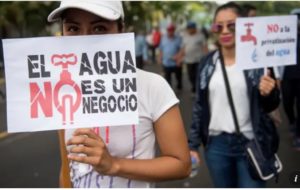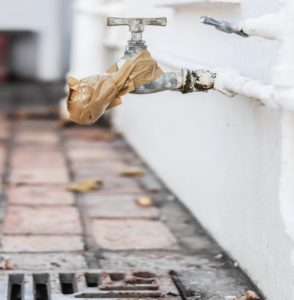Blog
Why is Water Scarcity Such a Problem in El Salvador?
Written by Streisand Neto
March 13, 2019
In this day and age, we often assume that water should be globally accessible. Unfortunately, this is not always the case. I was concerned to learn that El Salvador is currently facing significant water scarcity, which is defined as a lack of sufficient water or difficulty in accessing it.
How did this happen?
First of all, it is important to understand the events of summer 2018. Three countries – El Salvador, Honduras, and Guatemala – endured a dry summer with minimal rainfall. According to Global Information and Early Warning System (GIEWS), these areas were located within a “dry corridor”, where crops and maize were highly affected. Farmers, who were dependent on precipitation, endured a difficult spell. The report’s authors also noted that the prolonged effects of being in an area prone to drought would result in “tight supplies and worsening food security.”
However, it is not solely limited rainfall, which has triggered El Salvador’s water crisis. In addition, political instability and external groups have affected access to water in rural areas.
Privatisation of El Salvador’s water supply

The Guardian, ‘Campaigners fear creeping privatisation of El Salvador’s water’
The sign above reads: “Water is not a business”.
The conservative government, National Republican Alliance, is proposing to introduce a water law. This would create a governing body to regulate water, approve permits for water use and establish taxes and tariffs. It also allows private sector businesses to operate in different communities. For example, Coca-Cola and other similar companies conduct drilling in water-rich Nejapa, El Salvador.
In a video by AJ+ entitled ‘How is El Salvador creating Climate Refugees?’, the narrator highlights the government’s proposal to include “members of the business sector on the governing body.” If the proposal is implemented, there are concerns that it would legalise the exploitation and extraction of water resources. This could increase water contamination, which would affect local communities.
Anna-Catherine Brigida of The Guardian highlighted water activists’ opposition to further monopoly of water due to fears concerning of widespread water shortages and extortionate prices.

Upsplash: A Closed Tap in Africa
Water scarcity in other countries
Countries such as Madagascar have faced similar water shortages. WaterAid’s recent report, ‘Caught short‘, revealed cases of under-nutrition due to water contamination. In an Al Jazeera video entitled ‘What can be done to stop global water scarcity?’, Robert Rubinstein, chairman of TBLI Group, urged governments to take stronger action on this issue.
Effects of climate change
A new World Bank report found that climate change could aggravate water scarcity, which could cost some regions up to 6% of their GDP, spur migration, and spark conflict. However, its authors noted that most countries could neutralise the adverse impacts of water scarcity by taking action to allocate and use water resources more efficiently.
Potential solutions
Resolving water scarcity will be a long process in El Salvador. I believe that Cape Town could offer inspiration. The city tackled its own water scarcity issues by restricting water usage to 50 litres per person per day, limiting toilet flushing and nighttime irrigation. These measures helped reduce Cape Town’s water use dropped from 600m litres per day in mid 2017 to 507m litres per day at the end of April. What’s more, Laos and Cambodia successfully installed new infrastructure, which has increased rural communities’ access to water.
Streisand Neto is currently studying for an MSc in International Politics at LIDC core member institution, SOAS University of London.

